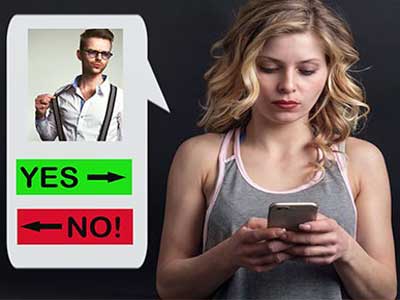“In the beginning internet dating was regarded as for people who are failures at relationships,” said Fisher. “That changed into, ‘It’s OK, but not for me.’ These days, so many people do it, the stigma is gone.”
In her role at Match, Fisher conducts an annual survey to gauge trends and behavior patterns among singles, ages 18 to 71. Every year, for eight years, she includes the question: “Where did you meet your most recent first date?” This year, 40 percent of respondents said they met their most recent date on the internet, compared with 25 percent connecting through a friend and 6 percent finding their last date in a bar or place of worship.
“Bottom line,” said Fisher, “it is becoming the leading way to meet people worldwide.”
But is the proliferation of dating sites and mobile apps – some that require users share little more than their first name, location and cute photo before engaging in casual hookups – altering our courtship experiences and long-term relationships?
Well, yes, and no.
This technology does cast a much wider net than traditional dating methods, said Jennifer Theiss, associate professor with the School of Communication and Information (SC&I) at Rutgers-New Brunswick. In fact, Theiss never would have met her husband 10 years ago had he not set the radius of his Match.com search to 50 miles.
“I lived 48 miles away,” she said. “We weren’t going to run in to each other at the grocery store. We didn’t have common friends. The online platform has made it possible to expand the web of who you could potentially meet.”
And not just a geographical web, said Fisher, who adds that the advent of matching algorithm technology in combination with societal shifts toward marriage have led to more interracial relationships.
“Women don’t have to marry to be financially supported and men don’t have to marry to have someone to cook and raise the babies. We marry for companionship,” said Fisher. “It’s no longer about sharing the same religion or ethnicity. It’s about having the same ambitions, interests and goals in life.”
Marriage – or at least love – is still the end goal for many who sign up for sites, such as Match or eHarmony, that focus on compatibility and require users to submit lengthy profiles. But these days not everyone on a dating app is searching for their soul mate, said Theiss.
“Back then people were typically using the sites to find a more committed relationship. They were looking for their person,” Theiss said. “Now we have Tinder, Bumble and Grindr, where it’s swipe left or right on a photograph. The question has changed from, ‘Who is this person?’ to ‘Am I attracted to this person?’ ”
While these apps depend on sophisticated smart phone technology, they tap into our most primal urges. Still, she said, swiping through prospective dates on an app is no more superficial than deciding whether to talk to a stranger in person.
“If you’re out and see someone cute, you might talk to him or if you don’t find someone attractive, you didn’t talk to him,” Theiss said. “Both are snap impressions you make about people without knowing anything about them.”
While the latest mobile apps literally put dozens of matches a day at your fingertips – and have earned a rep for spawning more casual hookups than marriage proposals – Fisher credits them with fostering a "slow love" trend that leads to marrying later – women at 27 and men at 29 – and more successfully.

















Related Items
Satellite internet emerges as key enabler of digital connectivity
Addiction of 'screen' is ruining relationships...!
Are broken relationships the price of women's empowerment?